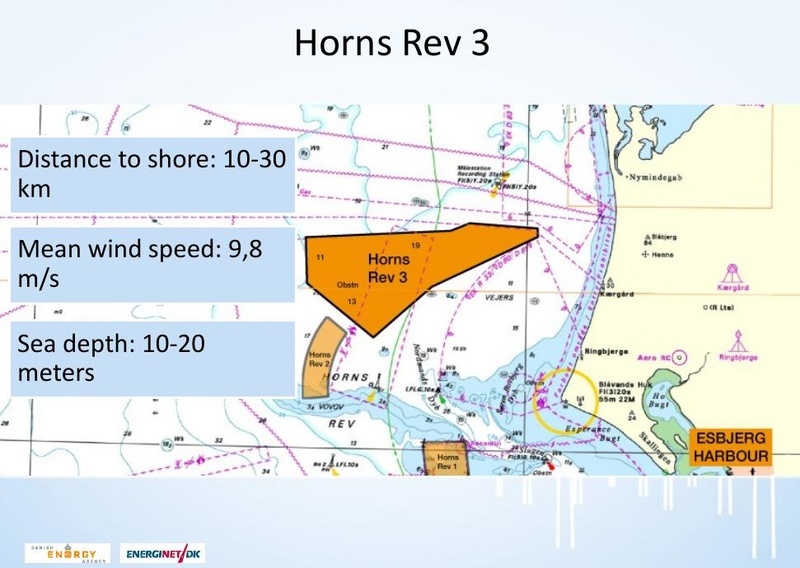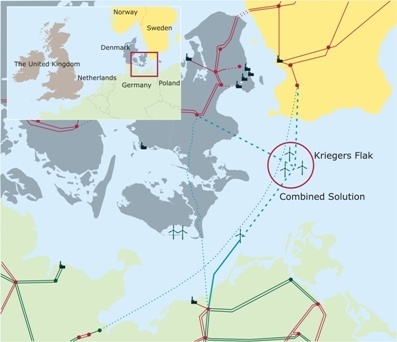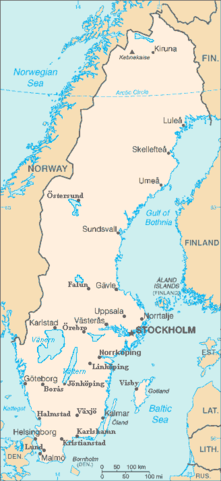News Release from windfair.net
Wind Industry Profile of
Sweden vs. Denmark: Offshore Wind Energy in Northern Europe
Denmark is known to the world as the cradle of wind energy. Over the past 30 years, the industry has developed into a significant economic sector where more than 30,000 of the approximately 5.7 million Danes are employed today. The annual turnover of turbine manufacturers alone is 7.2 billion Euro – no wonder, as Denmark's Vestas is the largest turbine manufacturer in the world.
The country in general is far ahead in producing electricity from renewable energy sources. The national climate plan envisages that by 2050 the total Danish electricity supply will be covered by renewables. And the country has already gone quite far along this path.
The largest share of renewables is provided by wind energy with around 40% today. Morten Basse Jensen, chairman of the Danish cluster Offshoreenergy.dk, stressed at the conference in Hamburg that this share is to be further expanded to 60% by 2020. On July 9th, 2015 international spotlight was focused on Denmark as domestic turbines produced 140% of the average electricity demand of the country on a single day.
Installed capacity lies around 4.8GW including several offshore projects. According to Jensen, a further expansion of 1,5GW of offshore wind is planned by 2020. These figures mainly include the project of Horns Rev 3 and the area around Kriegers Flak, which is directly adjacent to the German EEZ in the Baltic Sea. Furthermore, Denmark will implement a number of 'near shore' wind farms in the coming years, i.e. located at a distance of up to 12km off the coast. "We were the ones who invented 'near shore' some years ago and now we want to build several near shore wind farms with a capacity of 450MW until 2020," said Jensen.
The contract for the 400MW Horns Rev 3 wind farm in the North Sea recently went to Swedish energy company Vattenfall, which was able to score with a particularly low rate for the electricity. For the first time ever the price for offshore wind power was as low as 10.31 cents/kWh. The Danish Energy Minister Rasmus Helveg Petersen commented this development: "With Horns Rev 3 Denmark writes wind energy history by implementing significant price reductions in the offshore sector. The low price is not just good for Denmark, but good for the international energy transition."

Map of the area of Horns Rev 3 (Source: Danish Energy Agency)
Denmark will also break new ground in the area around Kriegers Flak in the Baltic Sea. The fact that the Danish EEZ borders directly to the German and Swedish EEZ, creates new opportunities for cooperation. In Germany, the Baltic 2 wind farm was already connected to the grid a few days ago. When the farm in Danish waters will also be completed, both are to be connected to a power line, which facilitates the flow of electricity between Northern and Continental Europe.

The area of the three EEZ at Kriegers Flak (Source: Energinet.dk)
In Sweden though the situation looks quite different: The country currently obtains still almost 50% of its energy from nuclear power. The newly elected government, however, has announced a year ago that only renewable sources will be supported in the future and has taken various measures to exit from nuclear energy.
 In addition to the intensive use of hydropower, Sweden does indeed already have quite a track record in wind energy. The country currently has an installed onshore capacity of 6000MW, but only 200MW offshore, while Sweden has got a coastline of 3218km.
In addition to the intensive use of hydropower, Sweden does indeed already have quite a track record in wind energy. The country currently has an installed onshore capacity of 6000MW, but only 200MW offshore, while Sweden has got a coastline of 3218km.
Göran Dalén, who can look back on a long career in the wind energy sector and currently works for Trinda Energy as a Senior Advisor, notified in Hamburg, the potential for offshore wind in the Baltic Sea with all the littoral states is about 17,000MW. But there are several factors that impede the development of offshore wind energy there. Because the Baltic Sea has been heavily influenced by the Ice Age with its moving landmasses there are many different types of soil in the water. Sweden has already got a good knowledge of these soils through extensive studies and can assist with support for construction companies upon selection of foundations and foundation structures.
The ice in the Baltic Sea plays a greater role than in the North Sea, provides Dalén, but is not a problem on the other hand: "The ice is manageable, as shown by the many lighthouses we have already built in the Baltic Sea." Hard tro control pack ice is the only uncertainty. Solution might be building a second landing platform further up the tower, which can still be reached by boat if the lower platform is frozen over in winter.
But Dalén pointed to another problem that has hitherto prevented the expansion of the Swedish offshore industry: the difficult relationship between onshore and offshore wind industry. Although Sweden's last built offshore wind farm by Eon could be constructed without any subsidies at all, this great fact is part of the problem: The prices are still too high for the offshore industry to grow without government support. The onshore proponents point to that obstacle: Wind farms with the same capacity built onshore are still much cheaper, so why go offshore?
Although the government has been working on developing a concept in recent months, there will be no earlier decision than in 2017, when the Energy Commission has to submit a final draft.
Overall, the situation in Sweden is reminiscent of the current circumstances in the United States. There, too, a thriving onshore market was able to develop by support via PTC in recent years, while the offshore wind industry could not gain a foothold to this day. The construction of the first offshore wind farm Block Island as well as the support of the Obama administration which has been announced specifically to promote offshore wind as part of the 'Climate Action' plan, stirs up hope though that the US will follow in creating an offshore wind industry.
As to Sweden a look at the bigger picture – especially in direction of its neighbor Denmark – would certainly help because the Danish example shows that only a good mix of offshore and onshore wind energy can create a sustainable electricity mix in favor of renewables.
- Author:
- Katrin Radtke
- Email:
- kr@windmesse.de

